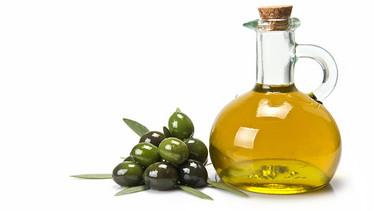Food, Beverage, and Natural Products

Learn what A-TEEM Spectroscopy can do for Food, Beverage, and Natural Products analysis
A-TEEM provides robust classification and quantification of low concentration samples in complex matrices, including the quantification of polyphenols in wine; detection of degradation in olive oil; rapid determination of THC well below legal limits in hemp samples; and detection of adulterants in natural products used in nutraceuticals.
Typically, food analysis is dominated by separations approaches: HPLC, LC-MS, GC, GC-MS. By the time that solvents, columns, standards, and waste disposal fees are considered, these methods are expensive to run.
Molecular spectroscopic methods, most commonly Near Infrared (NIR), but including FT-IR and Raman are useful for certain measurements, and have low per-measurement costs, easy sample preparation, and rapid measurement time. However, the sensitivity and detection limits of these techniques is low compared to LC-MS or GC-MS, limiting the types of problems that can be tackled.
A-TEEM incorporates the best characteristics of both chromatographic and spectroscopic methods, while overcoming the challenges that these measurement modalities struggle against.
In the food industry, the Aqualog A-TEEM spectrometer can be used to quantify olive oils with a simple, fast and sensitive optical method, compared to more traditional analytical methods.
Extra virgin olive oil (EVOO) is the highest quality rating for an olive oil, and consequently it is often adulterated with less expensive oils (Gurdeniz G.and Ozen B. Food Chemistry 116 (2009) 519–525). EVOO’s are made of olives that are first cold pressed within hours after harvest, without maceration or any extraction. All other fractions of olive oils are classified as not extra virgin olive oils. A-TEEM molecular fingerprinting can be used to easily identify and detect adulterated products.
Below are A-TEEM molecular fingerprints of seven commercial brands of EVOO-labelled olive oils and one brand of extra light (ELT).
Figure 1. Chlorophyll and degradation products can easily be seen in the A-TEEM fingerprints of some of these commercial EVOO-labelled olive oils, acquired with Aqualog.
Applying multivariate analysis to A-TEEM data provides more detailed analysis on the variations of these different brands.
Figure 2. 3-D PARAFAC score plot of edible oils. Note the grouping of EVOO oils in the bottom right corner: The upper left corner features vegetable oils and extra light olive oil. Curiously, the “G” brand EVOO and the “S” brand EVOO are distinct from the rest of the EVOO group, implying the presence of degradation products, as seem in their Aqualog A-TEEM fingerprints. Acquired with Aqualog, PARAFAC analysis using Eigenvector Solo software.
Investigating these samples further, by excluding the chlorophyll emission region, and applying a 2-D PARAFAC scoreplot, reveals additional information.
Figure 3. 2-D PARAFAC scoreplot reveals that brand “A” moved to the region of brand “G” and brand “S”, while the rest of the EVOO oils stayed together in the bottom right corner of this scoreplot, as acquired with Aqualog. PARAFAC analysis using Eigenvector Solo software.
The A-TEEM technique can also be challenged to quantitativelydetect limits of blending of an extra light olive oil into an extra virgin olive oil using a Partial Least Squares (PLS) analysis of A-TEEM fingerprints.
Figure 4. PLS analysis of mixtures of EVOO with increasing proportions of purified ELT oil reveals excellent R2 values for calibration and validation, acquired with Aqualog. PLS analysis with Eigenvector Solo software.
Even lot-to-lot variations can be detected within the same EVOO product of a single commercial brand.
Figure 5. 3-D PARAFAC scoreplot showing lot-to-lot clustering from a prestigious brand purchased at different times and measured in a single session, acquired with Aqualog. PARAFAC analysis with Eigenvector Solo software.
Focusing PARAFAC multivariate analysis of A-TEEM data to the chlorophyll fluorescence region (emission above 500 nm) also allows a quick analysis of the freshness of a given sample. PARAFAC readily resolves the A-TEEM fingerprint into two major components with distinct and characteristic fluorescence emission and excitation spectra (Fig. 6) for chlorophyll a and pheophytin.
Fig. 6. Mode 3 loadings corresponding to fluorescence excitation spectra of Pheophytin and Chlorophyll a (Component 1 and Component 2 respectively)
Fig. 7. illustrates a subsequent analysis of a set of EVOOs obtained from the current harvest obtained directly from the producers in Spain and Greece by Savantes (www.savantes.org) for the 5th Olive Oil Conference tasting program session held in NY in 2019, compared to store-bought samples from earlier harvests. The relative abundance of chlorophyll compared to its degradation product pheophytin, can be related to the freshness of the product since Chlorophyll conversion to pheophytin starts to occur naturally over time immediately after packaging. It should be noted that the characteristic K232 and K270 values measured contemporaneously with EEM’s on the same sample by Aqualog remained within IOC guidelines (below 2.20 and 0.2 respectively) for all direct-sourced EVOOs but just for some of the store-bought ones.
Fig. 7. Relative content of chlorophyll and pheophytin in direct sourced (2019 harvest) and store-bought EVOOs (2018 and 2017 harvest). Avocado oil results are provided for comparison.
To learn more about how A-TEEM molecular fingerprinting can help you with your application, email us at a-teem.us(at)horiba.com
A-TEEM can been used for many applications, including the quantification of polyphenols in wine, the detection of degradation in olive oil, rapid determination of THC well below legal limits in hemp samples and detection of adulterants in natural products used in nutraceuticals. Use the filters below to find the application most suited for your needs.
A Simple, Fast, “Column Free” Molecular Fingerprinting Technology
HORIBA제품의 자세한 정보를 원하시면, 아래의 양식에 내용을 입력을 부탁드립니다.






